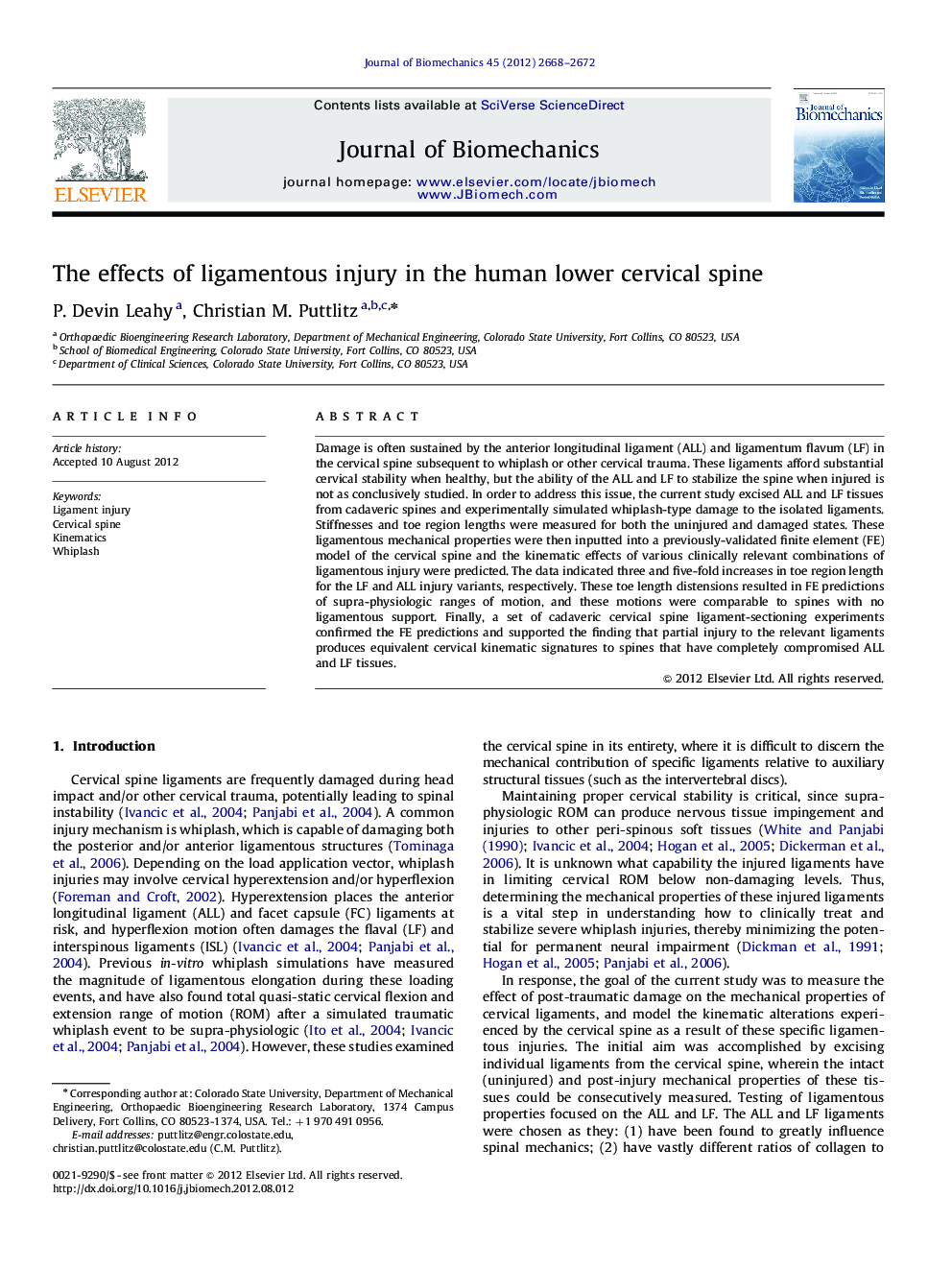| Article ID | Journal | Published Year | Pages | File Type |
|---|---|---|---|---|
| 872257 | Journal of Biomechanics | 2012 | 5 Pages |
Damage is often sustained by the anterior longitudinal ligament (ALL) and ligamentum flavum (LF) in the cervical spine subsequent to whiplash or other cervical trauma. These ligaments afford substantial cervical stability when healthy, but the ability of the ALL and LF to stabilize the spine when injured is not as conclusively studied. In order to address this issue, the current study excised ALL and LF tissues from cadaveric spines and experimentally simulated whiplash-type damage to the isolated ligaments. Stiffnesses and toe region lengths were measured for both the uninjured and damaged states. These ligamentous mechanical properties were then inputted into a previously-validated finite element (FE) model of the cervical spine and the kinematic effects of various clinically relevant combinations of ligamentous injury were predicted. The data indicated three and five-fold increases in toe region length for the LF and ALL injury variants, respectively. These toe length distensions resulted in FE predictions of supra-physiologic ranges of motion, and these motions were comparable to spines with no ligamentous support. Finally, a set of cadaveric cervical spine ligament-sectioning experiments confirmed the FE predictions and supported the finding that partial injury to the relevant ligaments produces equivalent cervical kinematic signatures to spines that have completely compromised ALL and LF tissues.
